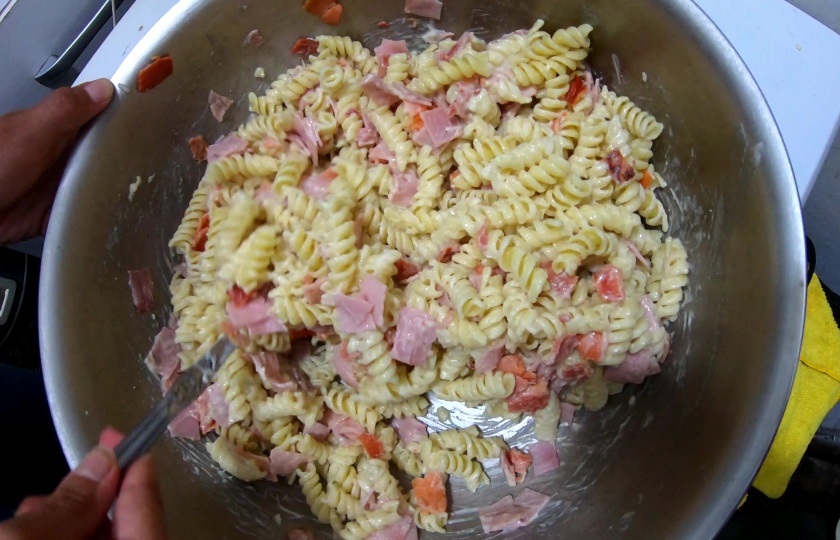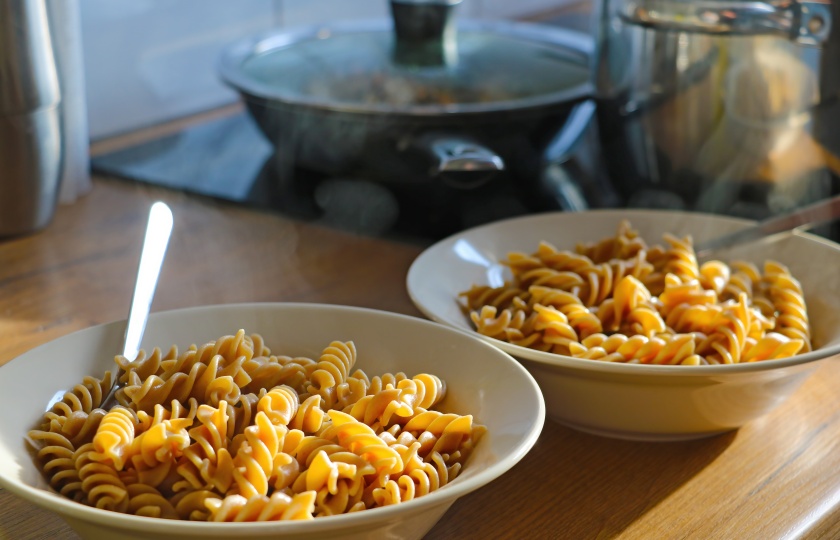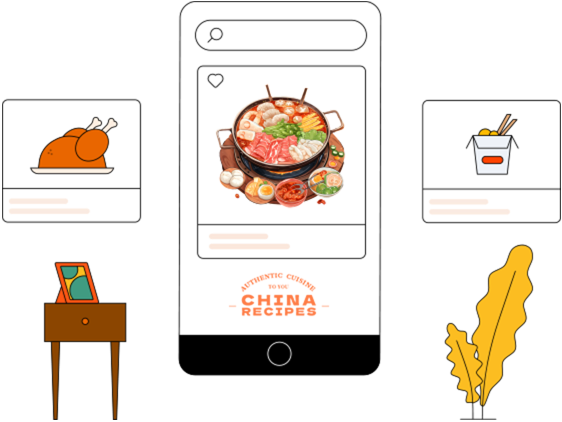Actually: Can You Cook Pasta in a Rice Cooker

For small kitchens with limited space, multi-purpose appliances are ideal - but can rice cookers perfectly handle pasta cooking?
Can you use a rice cooker for pasta?
Sure you can! But the normal rice - cooking mode can easily cause the water to overflow, so there are some details to pay attention to:
Water - quantity formula: The amount of pasta × 3 is the safest
For 200 grams of dry Italian pasta, add 600 ml of cold water. You must ensure that the water level is lower than the highest mark on the inner pot. For shaped pastas like spiral noodles and bow - tie noodles, add an extra half - cup of water because they absorb more water.
Techniques to prevent water from overflowing: Place a chopstick to leave a gap
When putting on the lid, place a wooden chopstick horizontally so that the steam has an outlet. Choose wide noodles or straight noodles broken into two sections, which are less likely to stick together than long and thin noodles. You can open the lid and stir 1 - 2 times during the cooking process.
Time control is more precise than when using an open flame
After cooking in the normal rice - cooking mode for 10 minutes, immediately switch to the keep - warm mode and let it simmer for 5 minutes. Check by pinching the noodles with chopsticks. If there is no white core in the center, you can take them out. Rinse the cooked noodles with cold water once to make them more elastic and chewy.
Do I need to stir the pasta while it's cooking in the rice cooker?
Stirring once in the middle is enough. Frequent lid - opening will actually affect the heating efficiency.
First stirring: Prevent clumping in the early boiling stage
Five minutes after starting the rice - cooking mode, open the lid and quickly stir once. Use a heat - resistant silicone spatula to push and spread the noodles along the bottom of the pot. Focus on breaking up the overlapping noodles. At this time, the noodles begin to soften but have not yet expanded, making it easiest to separate them.
Keep the cooker sealed during the shaping stage
Don't open the lid during the last 8 minutes. Rely on steam for even heating. If you are cooking hollow - shaped noodles like macaroni, you can gently lift and check through the vent slit with chopsticks to avoid large - scale stirring that may damage the shape.

Which types of pasta work best in a rice cooker?
Small elbow macaroni is the best.
Its short and curved structure allows heat to penetrate evenly, and the middle part won't be hard after cooking. Use 30% more water than usual. When the rice cooker automatically switches off, the macaroni will be just al dente. It goes great with meat sauce and is especially suitable for kids.
Rotini (spiral noodles) have strong sauce - absorbing ability.
The grooves on the surface can hold more sauce. Soak them in warm water for 5 minutes before cooking to shorten the cooking time. Add a spoonful of salt to the boiling water during cooking. After cooking, simply mix them with garlic - flavored olive oil and they will be very delicious.
Wide flat noodles are suitable for the simmering method.
Their flat shape makes them less likely to stick together. The water should be about two fingers wider than the noodles. After the rice cooker automatically switches off, don't open the lid and let the noodles simmer for 8 minutes to allow them to absorb water fully. They are especially chewy when made into cold noodles with sesame paste.
The least recommended are extra - long straight noodles and lasagna noodles. Straight noodles are easy to tangle into a ball, and lasagna noodles require precise temperature control for layering. If you really want to cook long straight noodles, remember to break them into two parts and soak them in water first.
Should I add oil to prevent pasta from sticking in the rice cooker?
There is no need to add extra oil when cooking Italian pasta in a rice cooker. Oil floats on the water surface and won't prevent the pasta from sticking; instead, it will make it difficult for the cooked noodles to hold the sauce.
Making the noodles non - sticky isn't actually that difficult.
Firstly, use enough water. The ratio of noodles to water should be at least 1:3. If there is too little water, it's easy for the noodles to stick to the bottom of the pot and they will clump together.
Secondly, stir the noodles frequently while cooking, focusing on two key time points: When the noodles are first put into the pot, shake them apart with chopsticks, and then stir them again around 8 minutes into the cooking to ensure even heating of the upper and lower layers.
Once the noodles are cooked, scoop them out immediately instead of leaving them soaking in hot water. If you're not going to eat them right away, rinse them with cold water and then toss them with a few drops of olive oil to prevent sticking. Adding oil at this point will work, but it must be done after the noodles are cooked.

Can I cook pasta sauce together with the pasta in the rice cooker?
You can do it simultaneously, but you need to adjust the steps according to the type of sauce. Here are several good methods:
For light sauces: Cook simultaneously directly
For light sauces such as pesto and garlic - olive oil, add them in the last 3 minutes of cooking the noodles. For example, when cooking 200 grams of noodles, when 7 minutes have passed, pour in 30 grams of pesto and stir well, then continue cooking until the end. Use the residual heat to let the aroma of basil penetrate the noodles.
For thick sauces: Layer in stages
Tomato - meat sauce or cream sauce require two steps. First, cook the noodles separately and fish them out. Dry the inner pot, then pour in the sauce and heat it in the keep - warm mode for 5 minutes. Then mix the noodles and let it simmer for 2 minutes. This way, you can maintain the thickness of the sauce and avoid the noodles becoming too soft from absorbing too much sauce.
For sauces with minced meat: Stir - fry first and then simmer
The minced meat needs pretreatment. Turn on the rice - cooking mode of the rice cooker and let it run empty for 3 minutes. Pour in a little oil and sauté the chopped onion until fragrant. Add the minced meat and stir - fry until it changes color, then move it to the edge of the inner pot. Place the raw noodles in the middle, add water to the normal amount. After cooking, the minced meat will automatically coat the noodles.
Important reminder: If using a sauce containing cheese, stir it in immediately after the power is cut off and use the residual heat to melt it. I once tried adding frozen shrimp and cream cubes in the last 5 minutes when cooking conchiglie. Sprinkle grated Parmesan cheese on top after taking it out of the pot, and it was comparable to the seafood pasta in a Western restaurant!
Can you cook pasta and rice together?
It is not recommended to cook Italian pasta and rice in the same pot. They have different water absorption rates. Italian pasta needs to quickly absorb a large amount of water, while rice requires slow simmering over low heat to be separate and distinct grains. If you force them to cook together, either the noodles will become mushy or the rice will be undercooked.
If you're short on time, you can handle them separately but simultaneously. For example, start cooking the rice first. When the water is almost dried up, boil water in another pot and cook the pasta. This way, they can be ready at the same time without affecting each other's taste.
In fact, the combination of staple foods doesn't necessarily have to be done in the pot. Spread the cooked rice on the bottom of the plate, serve it with Italian pasta in tomato - meat sauce, drizzle a little olive oil, and sprinkle grated cheese. It has a rich flavor and saves time. Prepare the sauce and side dishes in advance, and combining them is more flexible than cooking them all in one pot.























